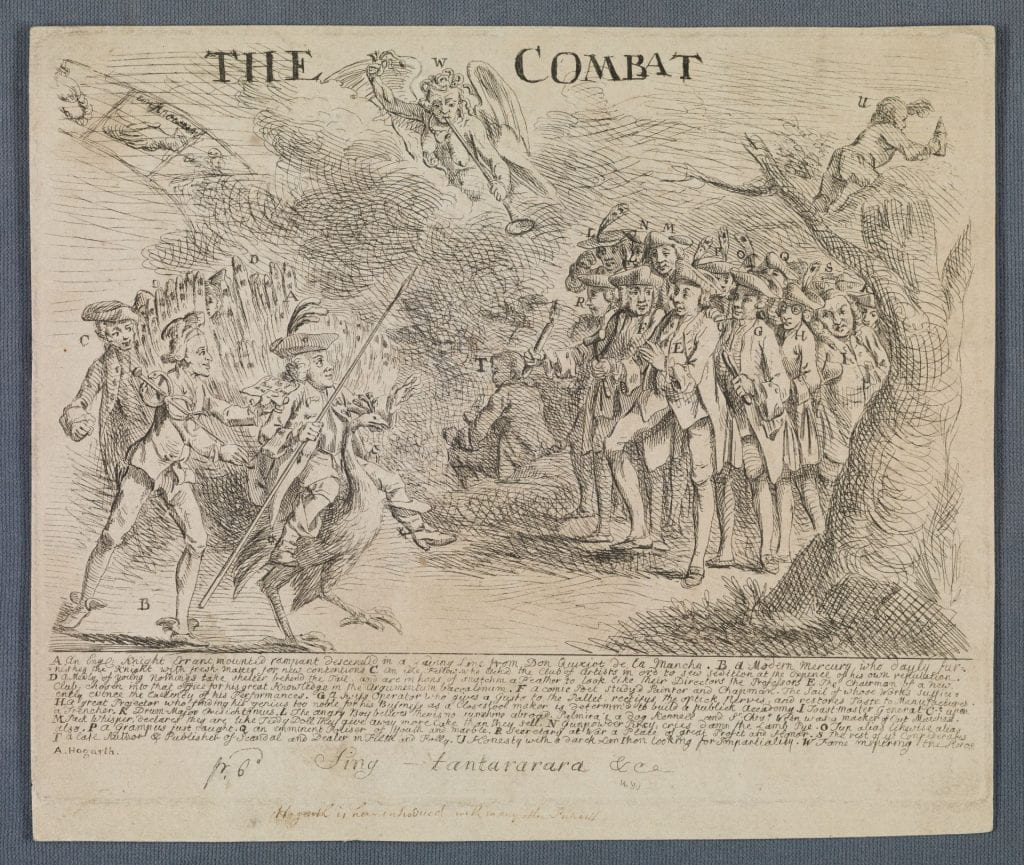
Satire on the conflict between artists campaigning for a public academy and those who were opposed. William Hogarth (A), shown as the leader of the latter group, rides a peacock. He is followed by (B) probably intended for the journalist Bonnell Thornton, dressed as Mercury, holding a paper lettered “Sr by G[o]d they laugh at us”, and (C) Thomas Burgess, a young artist “who etch’d the Club of Artists” [BM Satires 3278]; (D) consists of a group of young followers sheltering behind the peacock’s tail. Opposite them stands another group, a “New Club”, led by (E) the “Chairman” holding a gavel, probably Francis Hayman, and (F) an older man holding a candle described as a “comic Poet study’d Painter and Chapman”. Behind them stand (G), “a Swiss Operator”, (H) “a great Projector”, (I) “Toast Master General” and others only partly visible; those at the back of this group have peacock feathers in their hats. On the ground between the groups sits (T) “a late Author & Publisher of Scandal”. To the right, a child (U) holding a lantern has climbed a tree in search of “Impartiality”. Above flies Fame (W) “inspiring the Heros”. A zodiacal arc on the left includes a pair of clasped hands (a symbol for mutual trust) lettered “Unknown”.”–British Museum online catalogue.
- Printmaker: Burgess, Thomas, approximately 1730-1791, printmaker.
- Title: The combat [graphic].
- Publication: [London] : [publisher not identified], [1754?]
754.00.00.03
Acquired April 2022

